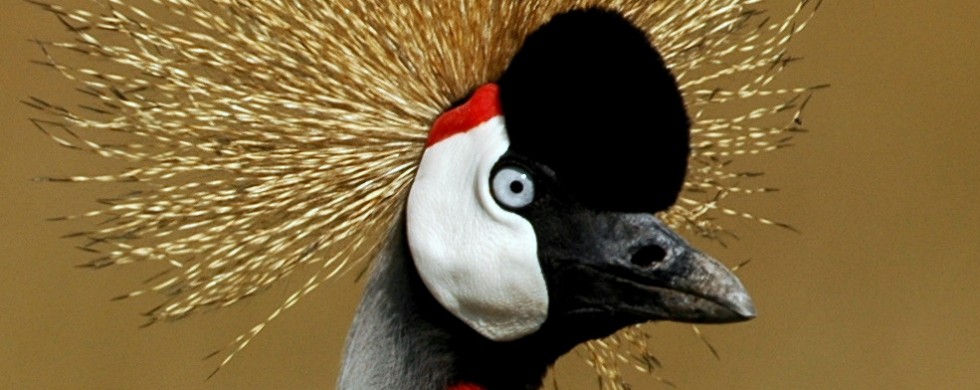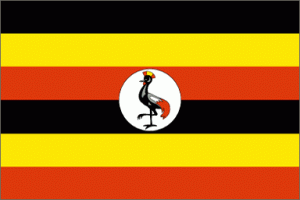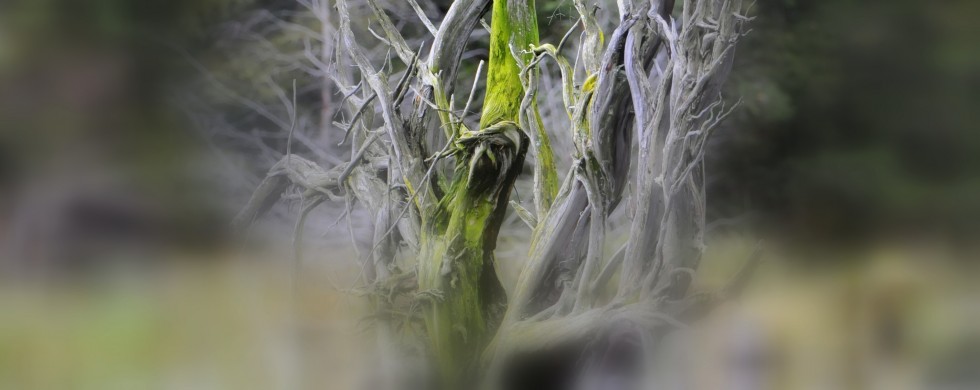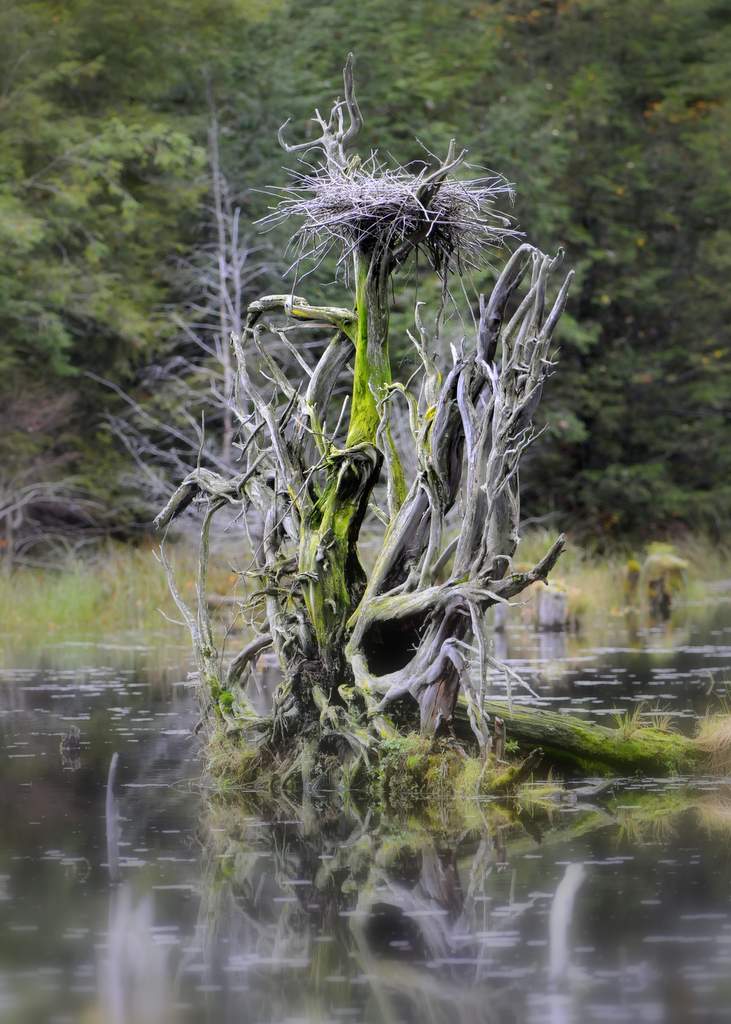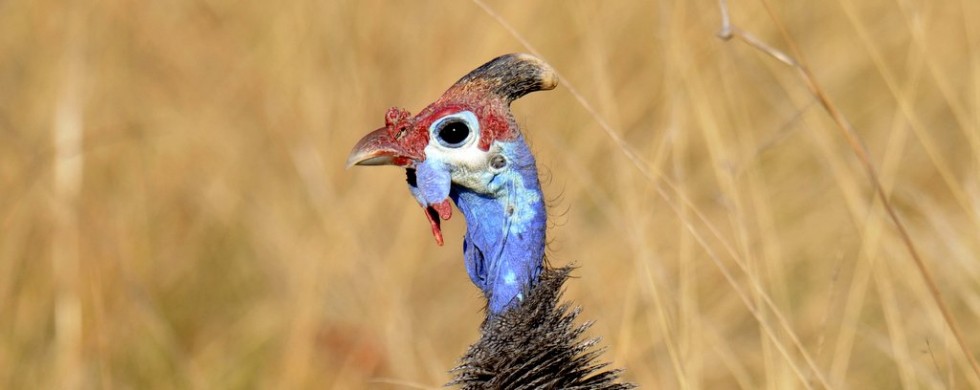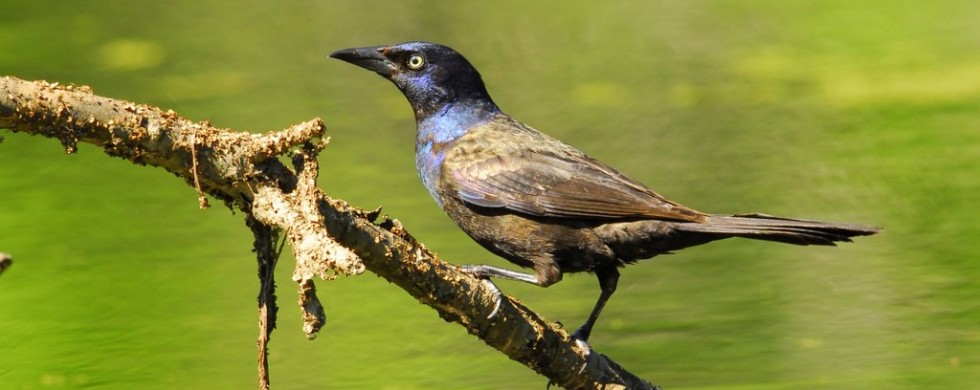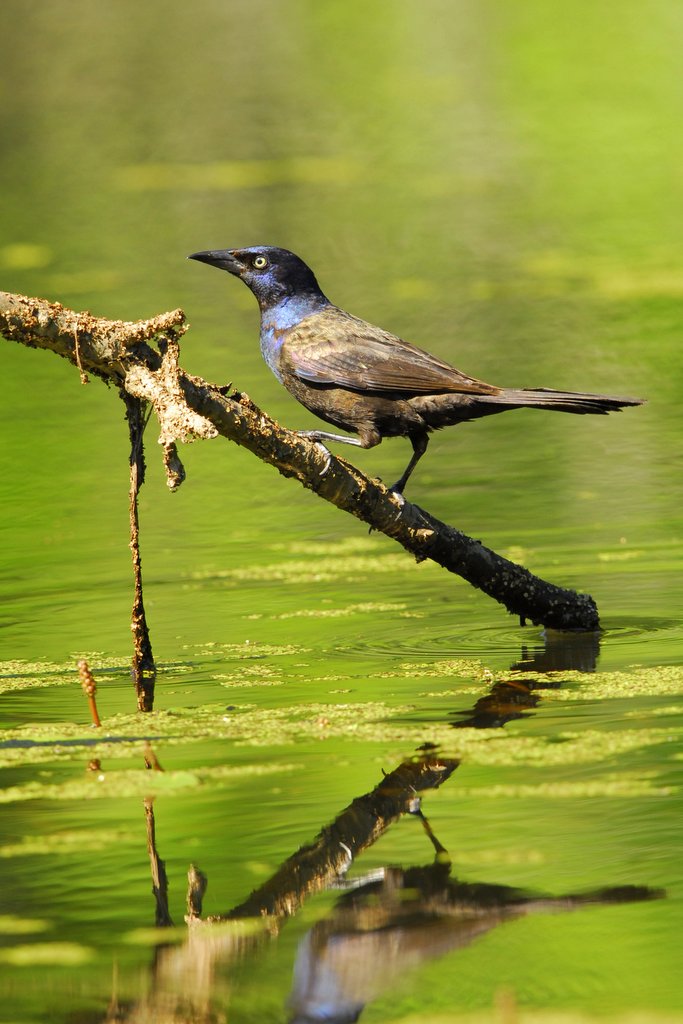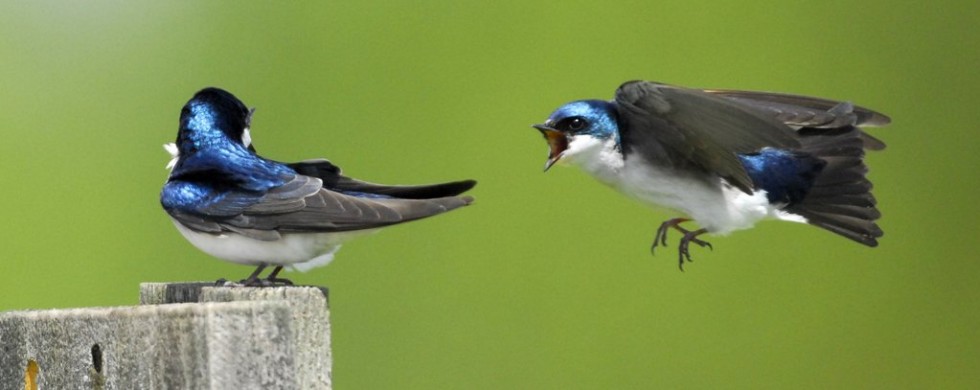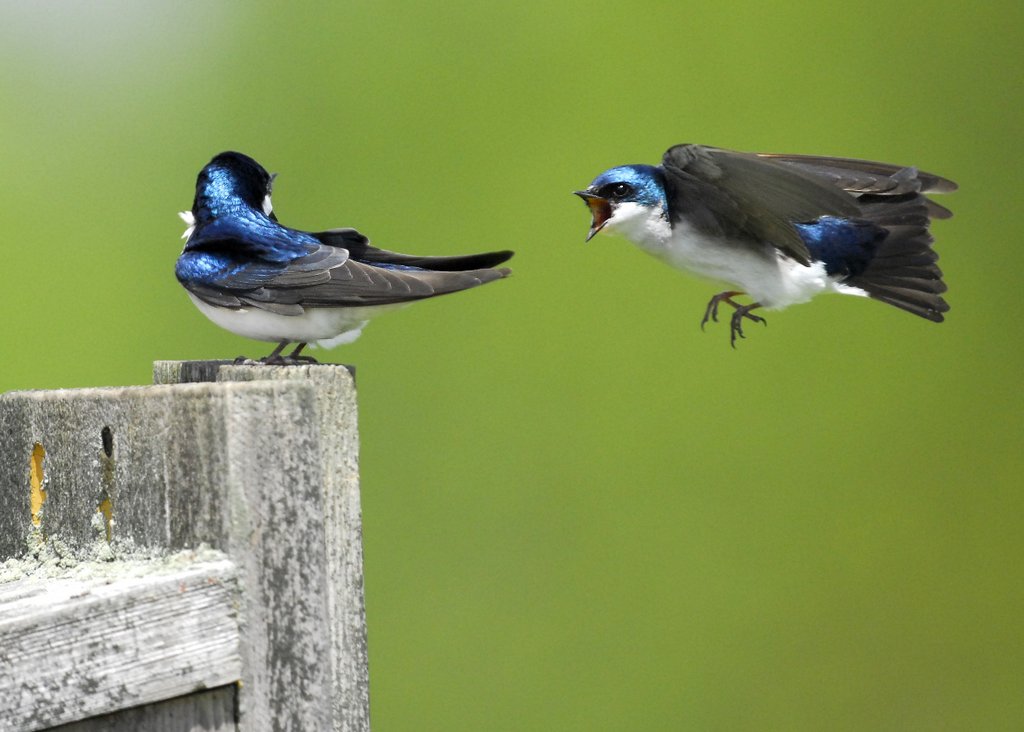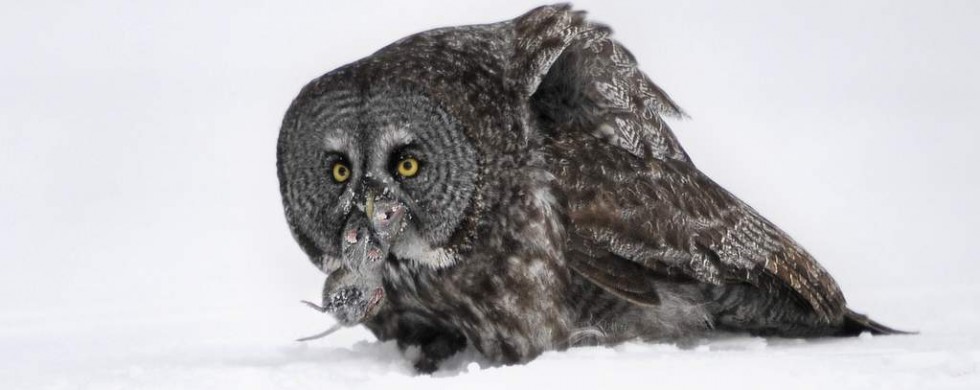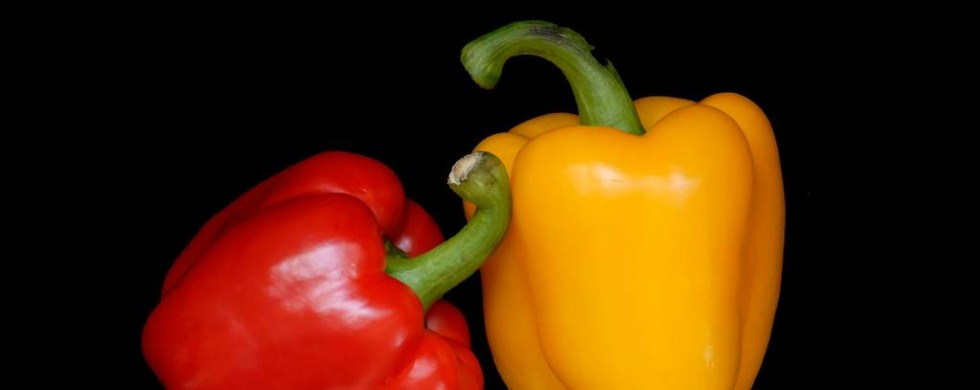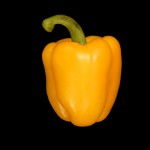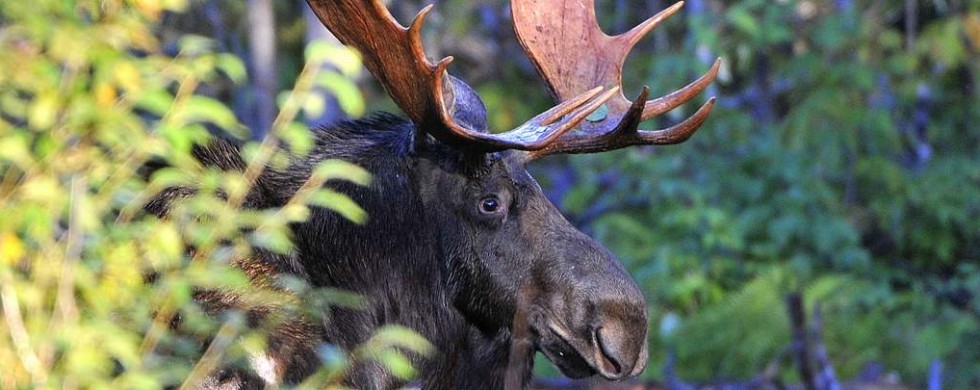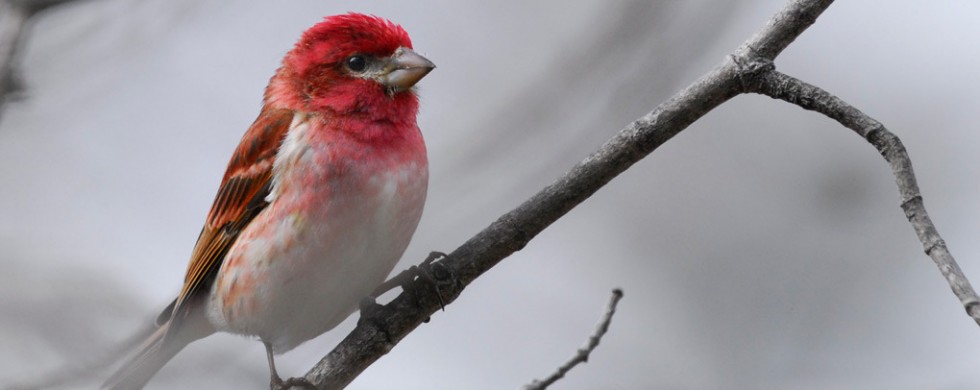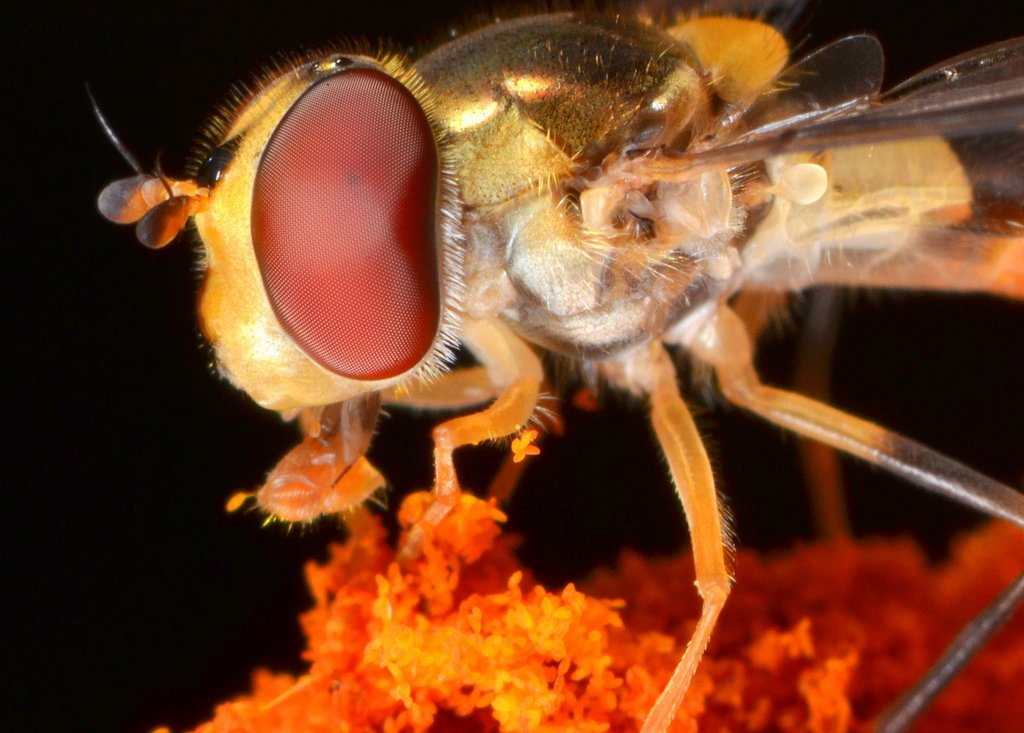31
Shot of the Month – August 2013
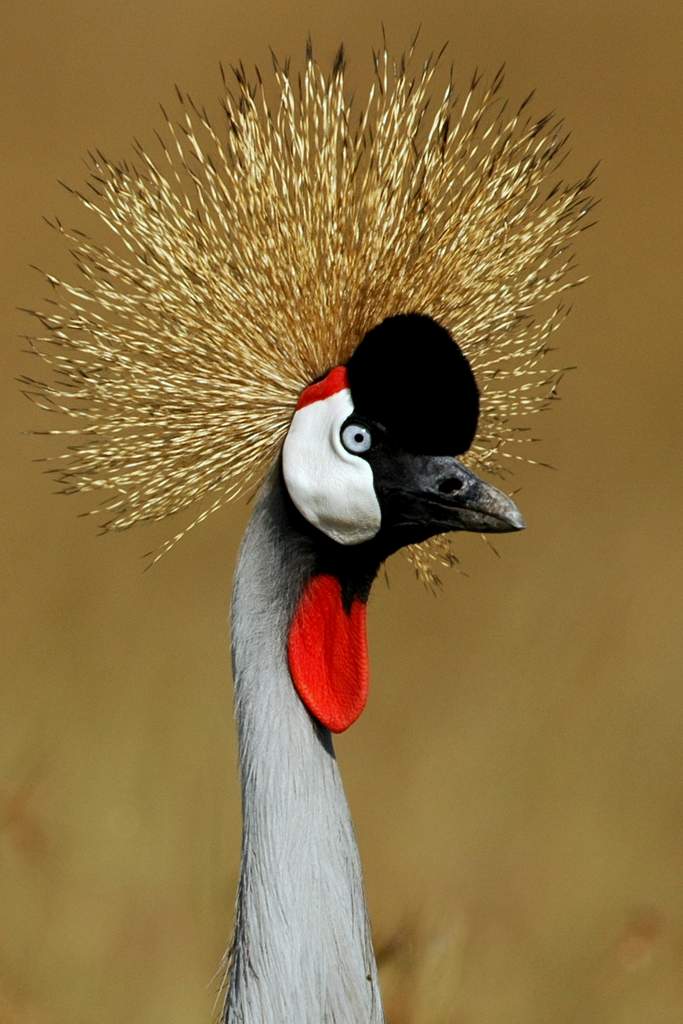 This month a look at the Grey Crowned Crane (aka, the Crested Crane), the seemingly dandelion-inspired, dancing dandy of the avian world.
This month a look at the Grey Crowned Crane (aka, the Crested Crane), the seemingly dandelion-inspired, dancing dandy of the avian world.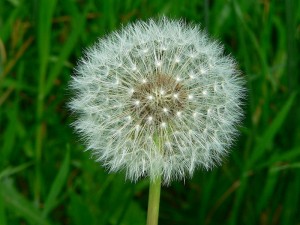
Dandelion: The golden crown on top is a sight to behold, especially when the sun hits it just right, and gives the bird a slightly crazed, mad hatter look. Gaze closely and you will see that each feather of the crown is dipped in black.
Dancing: When breeding the Crowned Cranes can put on quite a display called a “nuptial dance.” Their dance includes much bobbing, bowing, spreading of wings, and jumping to great effect. Here is a not-great-but-best-I-could-find video that gives you a sense of what the bird looks like when s/he busts a move.
Dandy: The Crowned Crane is a looker — she can stand three feet tall adorned in a lovely pearl grey body suit while the wings are mostly white but can include brown and golden feathers. The head is a stunning mix of white, red, and black.
Other Fun Grey Crowned Crane (GCC) Facts:
1. GCCs are the official bird of Uganda and can be found on the national flag. Its plumage contains the three colors of the Ugandan flag. Black identifies Uganda as a black nation in Africa. Yellow represents the abundant sunshine Uganda enjoys being situated on the equator. Red represents Uganda’s brotherhood with the rest of Africa and the world. (source)
2. As you may have gathered, GCCs are found in Africa. Two subspecies exist: the East African Crowned Crane and the South African Crowned Crane. The eastern lot can be found in Uganda, Kenya to Northern Zimbabwe. The southern crew can be found in Angola, Namibia, Botswana, Zimbabwe, and South Africa.
3. There are 15 species of cranes in the world — only 2 of those species can roost in trees. The GCC has long hind toes that give it the grip to be part of that elite group. (The Black Crowned Crane is the other)
4. GCCs do not migrate.
5. GCCs can live up to 22 years in the wild they seem to mate with the same partner for life.
6. While the population of GCCs is still fairly robust, the trend is dire. In the last 20 years, the population has dropped in half due to loss of habitat and the increased use of pesticides. In 2012 the GCC’s conservation status was downgraded from Vulnerable to Endangered (only 2 steps away from extinction)
Here’s hoping for a continued long reign for the crowned crane…
31
Shot of the Month – July 2013
When I first gazed upon this scene I was baffled. I couldn’t make heads or tails of it. I could see only chaos. Well, the pile of sticks seemed familiar. Yeah, ok, that could be a bird’s nest. But the rest of it? No idea. I looked and I looked. I looked some more. Tilting of the head. Squinting of the eyes. Tilt to the other side.
Nothin’.
Finally, our guide gave me the orientation I needed to make sense of it all.
She explained that we were looking at a tree that had fallen over in this small bog. The main trunk of the tree can be seen in the water to the right.
The standing fan of “branches” was actually the root system of the fallen tree! Bam. It all snapped into place. The pile of sticks on top was an abandoned osprey nest. Well, at least I got that part right.
I couldn’t take my eyes off the visual disarray. It seemed like abstract art. I have tweaked this image in that vein to bring out the “art” even more. I have boosted the colors to make the green on the main vertical root really pop out. And I have blurred the edges of the photo to allow the eyes to be naturally drawn into the “canvas.”
Is it just me or do you also see a screaming face in the main vertical root? It’s mouth is agape as if caught in an eternal scream. A pointy nose and two furrowed brows filled with rage just above the black gob. Two root arms spread out in opposite directions as if appealing to the gods. Seems like the tree is unfurling its outrage over the injustice that has befallen it.
I love how something so real, a tree (you know, brown, stands straight, has some green stuff on it), has been transported into the realm of the abstract where lines and shapes no longer follow the rules and new meanings and realities blur from one into the next.
Perhaps this is Mother Nature’s version of the Rorschach test? If yes, I don’t think that I want to know how I did.
Something to ponder over your morning coffee: If there is no one in the forest to hear a tree scream, does it make a sound?
Until next month….
30
Shot of the Month – June 2013
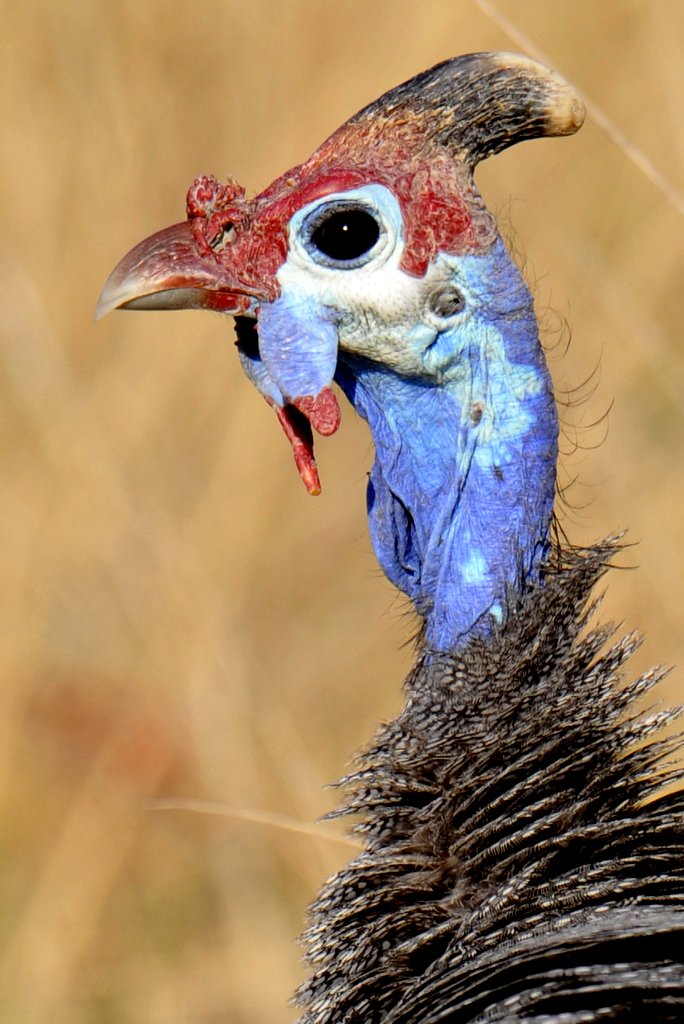 I love this shot. The image is r-a-z-o-r sharp, which is the holy grail for photographers (or at least a major component of said grail). I can see every freakin hair on this fella’s neck. The background is nicely blurred so the subject, a Helmeted Guineafowl (HG), really pops. I find the image to be a fascinating yet hard-to-categorize mix of textures, shapes, and colors. The spiky neck feathers add a nice ruff flair. The crazy colors (did he tie-dye that neck?); the red head, the jazzy dual-hued, yet color-coordinated, wattle things. The aforementioned neck hairs. The dramatic head crown doodad. The red stuff on the nose. Wow. Put it all together and the image stops you in your tracks. It certainly makes for compelling viewing, albeit, perhaps not for a long time. Warm and cuddly he ain’t.
I love this shot. The image is r-a-z-o-r sharp, which is the holy grail for photographers (or at least a major component of said grail). I can see every freakin hair on this fella’s neck. The background is nicely blurred so the subject, a Helmeted Guineafowl (HG), really pops. I find the image to be a fascinating yet hard-to-categorize mix of textures, shapes, and colors. The spiky neck feathers add a nice ruff flair. The crazy colors (did he tie-dye that neck?); the red head, the jazzy dual-hued, yet color-coordinated, wattle things. The aforementioned neck hairs. The dramatic head crown doodad. The red stuff on the nose. Wow. Put it all together and the image stops you in your tracks. It certainly makes for compelling viewing, albeit, perhaps not for a long time. Warm and cuddly he ain’t.
Helmeted Guineafowl are naturally found in Sub-Saharan Africa though domesticated versions can be found in the US, England, and just about anywhere people can raise chickens. Wild varieties of the helmeted Guinea fowl have been introduced into the West Indies, Brazil, Australia, and southern France.
HG are members of the order Galliformes; the same order that includes turkeys, grouse, chicken, quail, ptarmigan, partridge, pheasant, and Cracidae.
Accordingly, HG spend much of their time scratching around on the ground in flocks of up to 25 birds looking for food rather, well, chicken-like. They can walk 6 miles or more a day. HG are similar in size to grouse or partridges, and like them, typically fly for only short distances and glide for most of the time in the air after the initial burst from cover. When in danger their preferred escape strategy is to run for it and only take flight if absolutely necessary. However, HG do roost in trees at night and during the heat of the day.
There are about 7 species of Guineafowl but only the Helmeted variety has the horn-like casque on top.
The Helmeted Guineafowl, I tip my hat to your bold if not totally beautiful style.
30
Shot of the Month – May 2013
Ever been at your favorite watering hole or dining establishment when a boisterous crowd rolls in and takes over the place? They talk too loudly. They, generally, make too much noise. You get jostled, perhaps spilling your drink, as they tumble into your space with their horseplay. They ravage through the snack bowls leaving you soggy and hungry.
In Bird World (great rides but I always leave feeling a bit peckish…) a similar scene often plays out at the local bird feeder with a group of Common Grackles, like the one shown here, playing the role of roughneck. Grackles will often intimidate other birds at feeders and push them aside to eat first.
Common Grackles are large, noisy, and gregarious birds that often hang out together in large numbers. Their song is particularly harsh and when multiplied by thousands it can get to rock concert levels of cacophony.
Common Grackles are omnivores and very resourceful foragers and can eat insects, minnows, frogs, eggs, berries, small birds, and mice, and well, it would be easier to list what they don’t eat. Grackles sometimes follow plows to catch invertebrates and mice, wade into water to catch small fish, pick leeches off the legs of turtles, steal worms from the American Robin, or hang out at outdoor eating areas and feed on food dropped by humans. That partial list gives you a sense of the diverse range of strategies these crafty birds deploy to find food. During the summer up to one-quarter of a grackle’s diet may be animals. (source)
That being said, Grackles are especially fond of seeds and grains and are considered the number one threat to corn crops in the US!? (I guess we need more “Scaregrackles” and fewer Scarecrows.) They forage together in large flocks and typically descend on corn fields in large numbers causing millions of dollars of damage each year. Perhaps an irate farmer came up with the common name for a group of grackles: a plague.
Unlike many birds, Common Grackles are very successful in and near human landscapes due to their opportunistic and adaptable nature. Grackles prefer open and semi-open areas across North America east of the Rocky Mountains. The range of these birds was more “easterly’ but expanded west as settlers cleared the forests.
Despite their uncouth nature, the Common Grackle can be quite the sharp dresser. Catch the light right and their heads display a stunning green or blue iridescence, while their body plumage shimmers with a bronze hue.
The Common Grackle, the wily ruffian of the bird world.
30
Shot of the Month – April 2013
Most viewers cannot resist applying a narrative to this image of two Tree Swallows (TSs).
Many a spouse finds kinship with the bird on the left who appears to be getting an earful from the partner on the right. Perhaps the nest was left a mess? Forgot to bring home the mayflies for the kids? Well, no need to gossip.
Tree Swallows are found throughout most of the US and Canada but spend the winters in Mexico, Central America, and the Caribbean. (Who can argue with that?) I filmed these two at the Bombay Hook NWR in Delaware.
TS are very social and may be found in flocks that can include thousands and occasionally up to a million birds. During the breeding season the swallows are less inclined to mingle and a mating pair will defend its territory with great vigor from other birds and just about any creature that gets too close to the nest.
We actually don’t know if this is a breeding pair. Could be. It may be two adults fighting over a territory. Perhaps the bird on the right is last year’s chick demanding food — hoping that Dad won’t notice that Junior is all grown up now. Many possible scenarios. And that is half the fun…fill in the caption you find most appealing.
Nest predators include rat snakes, raccoons, black bears, chipmunks, mink, weasels, deer mice, feral cats, American Kestrels, Common Grackles, American Crows, and Northern Flickers. Outside of the nest adults are hunted by Sharp-shinned Hawks, Merlins, Peregrine Falcons, Great Horned Owls, and Black-billed Magpies. Sheesh. Should I stay or should I go?
Tree Swallows get their name from their preference to nest in tree cavities (cavities found in dead trees or perhaps a cavity made by a woodpecker, for example). They are also very happy to nest in wood boxes put out by humans. TSs breed in fields, marshes, shorelines, and wooded swamps and generally like to be near bodies of water that produce lots of flying insects. The dinner menu includes dragonflies, damselflies, flies, mayflies, caddisflies, true bugs, sawflies, bees, ants, wasps, beetles, stoneflies, and butterflies. Given their excellent flying skills, they typically chase prey in the air with acrobatic twists and turns and sometimes converge in large numbers in an insect swarm. During the breeding season, Tree Swallows eat high-calcium items like fish bones, crayfish exoskeletons, clamshells, and eggshells of gulls or loons. (source).
Tree Swallows pair up to breed but often mate secretly outside of the pair. The rapscallions! Occasionally a male attends two mates in separate nest sites. Though an individual swallow may have the same mate several years in a row, it is probably faithful to the site rather than the mate.
Given the aforementioned breeding behavior, those with active imaginations could divine yet another narrative for the above scene. As the screen fades to black, the voice-over opines “Tune in next week for more scandalous tales from the cattails….”
Until next month…..michael
31
Shot of the Month – March 2013
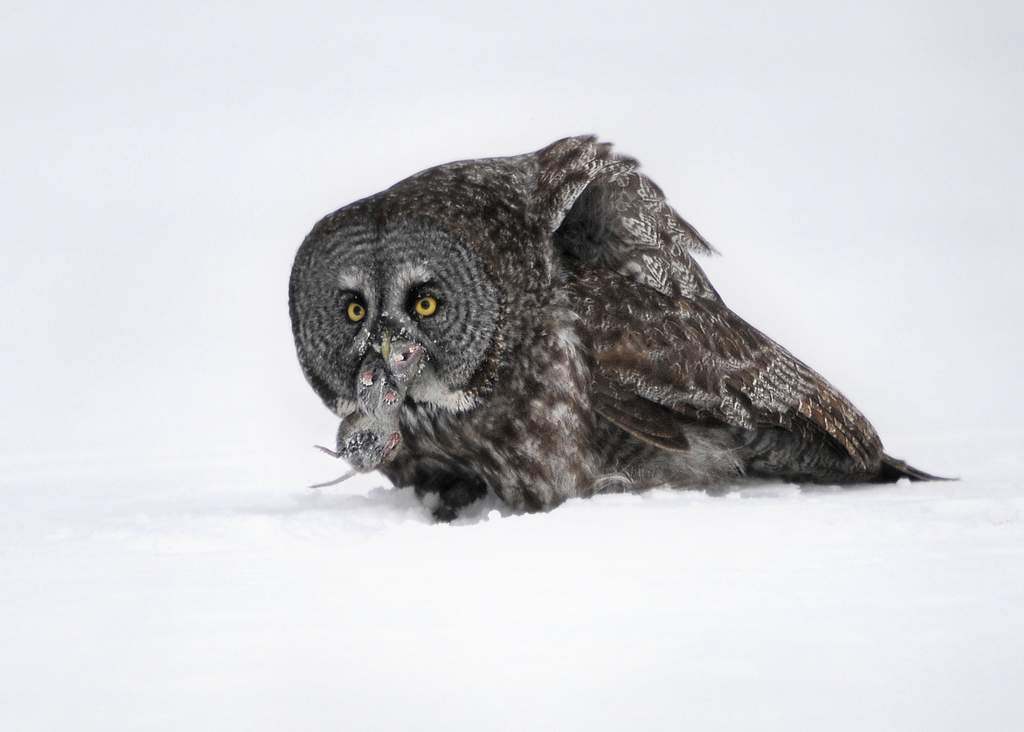 Like many people, I am a bit gaga over owls. I find them mesmerizing. They seem so majestic. Masterful. The embodiment of grace, power, and resolution.
Like many people, I am a bit gaga over owls. I find them mesmerizing. They seem so majestic. Masterful. The embodiment of grace, power, and resolution.
Since moving to Vermont finding and photographing owls had been a top priority. The venture had not been going well — I managed a few sightings last year but I had not captured a single noteworthy image.
And then a few weeks ago a dramatic change of fortune. We found two Great Gray Owls wintering near Montreal, Canada.
It is hard to describe how fortunate I feel to have captured this image, and more importantly, to have had the opportunity to observe this animal over two consecutive weekends.
A quick inventory of the miracles. First, just seeing a Great Gray Owl is pretty amazing unless you hang out in the Boreal forests of Canada. Not many people do. Second, seeing a Great Gray hunt? Astounding. And finally, to actually get a decent shot of the hunt and record this spectacular behavior? I must have died and gone to Errol heaven.
Upon seeing this image a friend, also a photo enthusiast, lamented how she often missed the “decisive moment” and wondered how I had managed to pull it off. The decisive moment is typically that split second at the height of the action — just as the lion lands on the zebra, or just as the bald eagle catches a starling in mid air. (I initially responded that I didn’t get THE decisive moment, which in this case, was when the owl dove into the snow feet first to grab the mouse underneath the surface. But, this moment comes in as a pretty close second)
Capturing that key moment has less to do with big lenses or fancy cameras. Sure they help, a tiny bit, but there are lots of people who have expensive gear nowadays and they rarely get the shot.
The most successful wildlife photographers are large part naturalists, or biologists, either by training or by practice. For consistent success, one must really understand an animal and its behavior. This requires many, many hours in the field observing nature. Only then can you begin to predict where to find an animal and have a sense of how it will react in different situations. It is this body of knowledge that tells you when to go and where to go. It tells you which lens to use and what settings to apply to your camera BEFORE the shot happens. It helps you understand how to behave to avoid detection or scaring off the animal.
For me it’s a numbers game. It’s all a matter of putting the hours in. The more you are out there, the more chances you will have of seeing something special. And the more you observe the more you can predict what will happen next. It is difficult for weekend photographers like me and my friend to get those hours in so we are rarely properly prepared to seize those scarce opportunities when they arise.
In just the roughly 24 hours that I spent observing the owls over 5 days patterns and insights began to emerge. I noticed that one owl liked to roost on a preferred branch, in a preferred tree most mornings. Another Great Gray seemed to like to patrol a field and a group of woods a bit further away. I began to understand the difference in the light patterns in the morning vs. the afternoon. I began to understand the dramatic shift in exposure caused by the snowy fields compared to the wooded areas and how to adjust for it.
My small, but growing understanding of the landscape, the animal, and the interaction between the two helped me get this shot. Even after just 9 hours of observation, I had a better sense of where to set up my tripod if I wanted to have a chance of capturing a Great Gray Owl hunt on “film.” I didn’t get it perfectly right — the owl flew 20 yards past where I had set up my equipment. But I was right just enough to still be close enough to get the shot. Luck also helped. Originally the owl had his back to me. To my amazement, once he had the mouse in his mouth he spun around and faced me.
Click.
(And they lived happily ever after….ok, at least two of the three parties involved did)
Until next month…. 🙂
26
Shot of the Month – February 2013
 A common ailment this time of year in northern latitudes is “cabin fever,”
A common ailment this time of year in northern latitudes is “cabin fever,”
” a state characterized by anxiety, restlessness, and boredom arising from a prolonged stay in remote or confined space.” (source)
This image is from 2008 and is the result of a similar malady. I had been back in the US for over a year after living overseas most of my adult life. Since returning I had not made any ventures into nature nor taken any photos. It was near the end of a long winter. I was bored. I missed engaging with nature.
I needed to take a photo of something.
Alas, I was living in an urban setting and wildlife was scarce. In my visually mundane environment, one blast of color stood out. Each week we would go to the grocery store and I was captivated by the explosion of color in the vegetable department. There were rows and rows of bell peppers in vibrant hues of green, yellow, and red. Each week I found myself lingering in the produce section wondering how I could capture that visual feast.
The fever was obviously running high as I purchased a ridiculous number of peppers (disregard the odd look from the checkout person). Once home I realized that I did not have enough. Back to the store to buy more. Then I went to the art supply store and purchased some black poster board. And then I began photographing, uh, peppers. I didn’t really know what I was doing as I never do “studio shooting.” I didn’t have the proper light set up, nor the knowledge or technique. But the project kept me engaged for days.
This shot, “Pepper Love,” is popular this time of year since February is also home to Valentine’s Day. In my defense, I can merely plead “Innocent due to insanity.”
I tried all sorts of arrangements. Peppers lined up in rows. Peppers piled high in a bucket. Peppers grouped by color. Then alternating by color. Used a mirror to create the illusion of infinite peppers. Peppers sprayed with water. Intimate portraits. Then mob scenes. Stems lined up. Stems alternating. The delirium raged.
Once the fever passed, a cold hard reality set in. What in the hell were we going to do with all these rapidly ripening peppers? Let’s just say that our freezer was overflowing and we explored a vast range of recipes requiring peppers long into the spring and summer. (I believe it took about a year till the last one was gone…)
In the end, I did not get many images that worked. My lack of experience won out. But I did learn a lot and I am sure that I would get better images on the next attempt. And we do have all those pepper recipes collecting dust…. hmmmn….
A few more “slides” that confirm the diagnosis of “cabin fever.” (Click on a cropped thumbnail to see the full image)
Until next month…. 🙂
30
Shot of the Month – January 2013
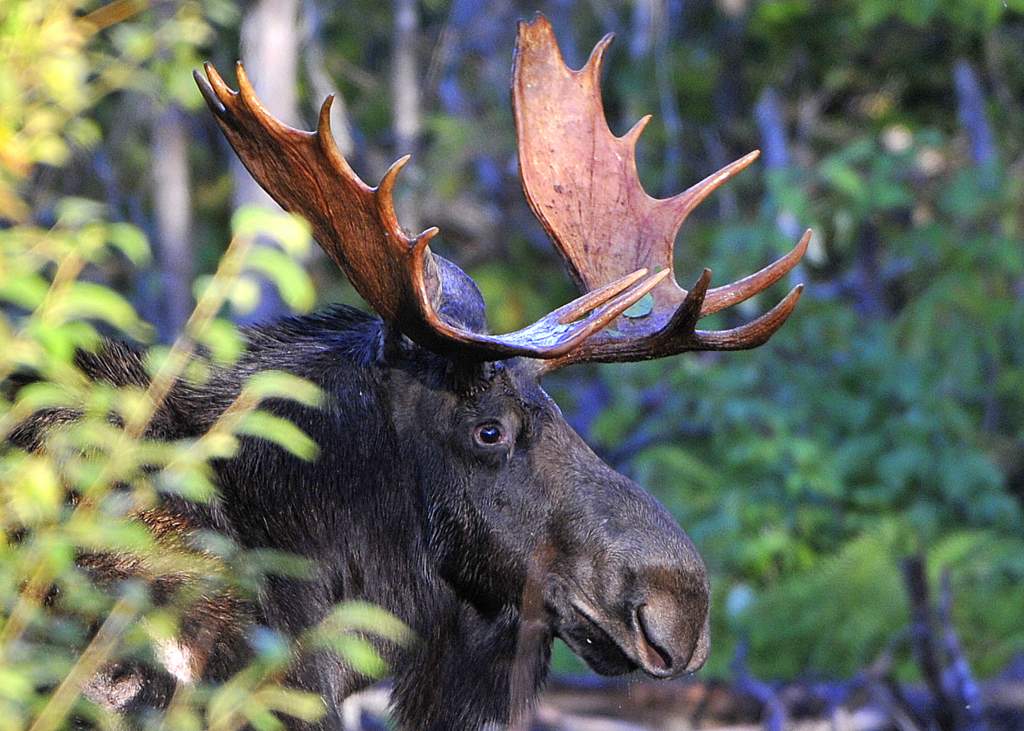 This month an image of the largest living deer species, the moose. Moose are distributed across a large range of the Northern Hemisphere so depending on where you are, you may see one of six distinct subspecies. This particular fellow, photographed in Maine, is an Eastern moose.
This month an image of the largest living deer species, the moose. Moose are distributed across a large range of the Northern Hemisphere so depending on where you are, you may see one of six distinct subspecies. This particular fellow, photographed in Maine, is an Eastern moose.
Canada is home to most of the moose in the Western Hemisphere with a population of 500,000 to 1 million. In the U.S. moose can be found in 15 states. Alaska is king with a population of 200,000. Northern New England states are another moose hotspot with Maine’s population of 76,000 taking the honors. Wyoming has a population of about 8,000 moose and Minnesota has 5,600 Bullwinkles.
In Europe moose are found mainly in Russia (pop. 730,000), Norway (pop. 120,000), Sweden (pop. 300,000 to 400,000), Finland (pop. 115,000), and a smattering in a few other countries.
From this list of countries, you can deduce that moose like cold weather — they primarily live in boreal and mixed deciduous forests in temperate and subarctic climates. Check out this site for some great maps and information on where moose live.
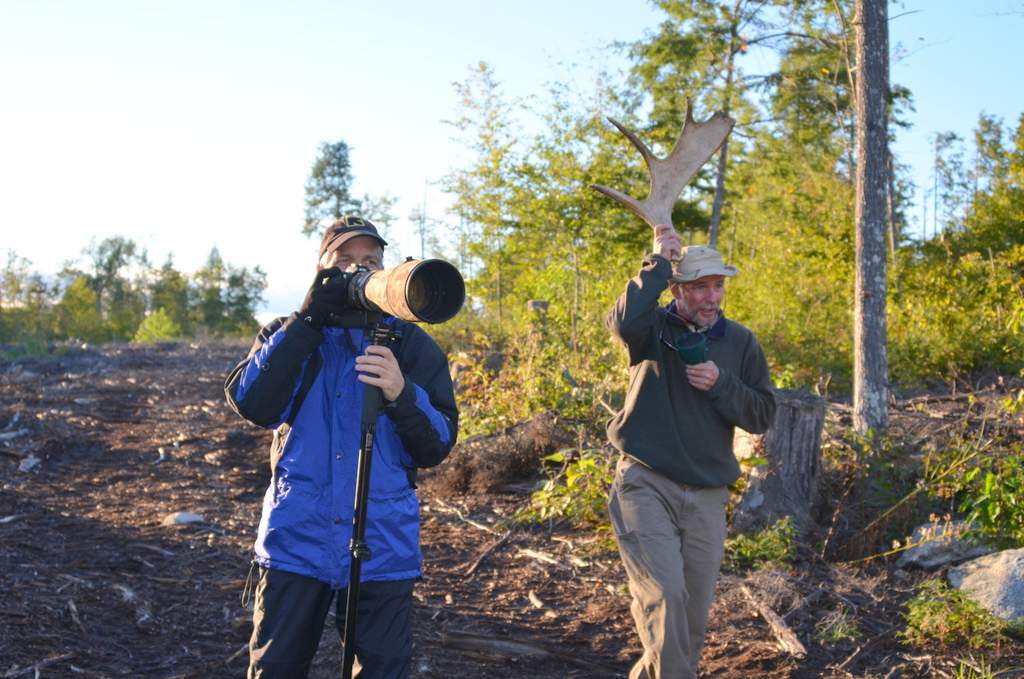
So, how does one find a moose to take his picture? Well, for me it involved spending a sleep-deprived week in Maine. Each day we would get up at 4:15 am to be on the road by 5:00 am. With our local guide Bryant at the wheel we spent each day wandering logging roads in search of moose. We usually did not get back to our hotel until 7 pm. Just enough time for a shower, download photos, and perhaps eat. We were too tired to go out for dinner and typically just nibbled on food we had brought along. In bed by 10 because 4:15 comes at you fast and hard. Repeat.
We timed our visit to coincide with the mating season. During this period both male (bull) and female (cow) moose call out to attract a partner. Several times a day we would stop at “favorable” locations and our guide would imitate a moose call to try and draw in a bull. In the second image, you can see me taking the photo of the moose shown above. Bryant had successfully called this large male in. You may notice that Bryant is holding up an antler — his attempt to look moose-like. Moose have terrible eyesight but excellent hearing and sense of smell.
Seeing a bull moose on a crisp autumn day in Maine…can be tiring, but definitely one for the life list.
Until next month….m
28
Shot of the Month – December 2012
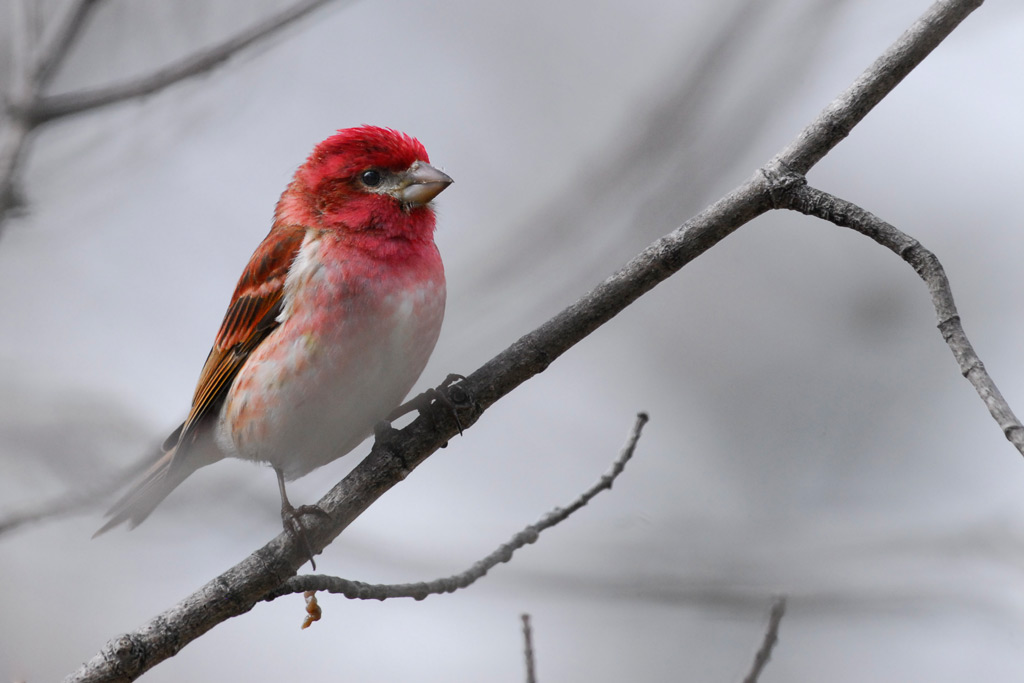 This month an image that hints at the beauty of the male Purple Finch. Do not adjust your monitor — the name is a red herring. There is nary a purple feather to be found on the fellow.
This month an image that hints at the beauty of the male Purple Finch. Do not adjust your monitor — the name is a red herring. There is nary a purple feather to be found on the fellow.
A more accurate, and superbly sublime, description of this bird was offered by Robert Tory Peterson (all birders in the crowd are now bowing in reverence…)… when he said that the male Purple Finch looked like a “sparrow dipped in raspberry juice.”
What can I add to that mental image that won’t seem terribly pedestrian?
No raspberry dipping for the female — she is is striped strictly in brown and white giving a very monochromatic sparrow-like appearance.
Purple finches breed in Canada and live year-round in Northeastern US and along the American Pacific Coast. In the winter many will migrate down from Canada into most of the states in the eastern half of the US.
Purple Finch Fun Fact: They are the state bird of New Hampshire.
Many people confuse the Purple Finch with the House Finch — they look quite similar. A quick tip for telling them apart: The Purple Finch’s beak is conical shaped while the House Finch’s upper mandible is curved downward. Over the past 40 years, the range and number of House Finches has grown significantly across the United States while the number of Purple Finches has dropped dramatically. Seems that the House Finch is rather aggressive and typically wins the battle for food against the Purple Finch.
Purple Finches dine, at least when House Finches aren’t around, primarily on seeds, berries, and insects. At backyard bird feeders they are particularly fond of black oil sunflower seeds or millet.
Is it just me, or is this whole “purple’ thing driving you crazy, too? Why does a rose-colored bird have “purple” in its name??!! I did some digging. The best answer I can find came from Chris Petrak:
Aside from the fact that bird names often make no sense, why is it called “Purple Finch?” To answer that, we need to know its scientific name: Carpodacus purpureus. The genus name comes from Greek and means “fruit eaters,” a questionable name for birds which are seasonal fruit eaters, but year-round seed eaters. The species name, purpureus, comes from Latin and means “crimson” or other reddish color. Our word “purple,” meaning a color obtained from mixing red and blue, derives from the Latin, purpureus. The Purple Finch is really a crimson-colored finch. Or, translating its scientific name, it is “crimson fruit-eater.” When taxonomists give birds their scientific names and common names, they put aside their science and become impressionistic artists.
A few other writers put forth that the word “purple” in days of olde used to be understood to be much redder in hue than as understood in our modern take of said color. So, way back when, the use of “Purple” Finch would have been more accurate.
Neither answer is terribly satisfying, however I console myself by imagining raspberry sparrow dunking, and my spirits are immediately lifted.
Until next month…Happy New Year!
15
Shot of the Month – November 2012
Fear not, we are not under attack from giant mutant killer bees.
This lil fella, a Hoverfly, is actually less than an inch in length and quite harmless.
There are over 6,000 species of hoverflies around the world and not a single one will harm you.
Most hoverflies look like more dangerous wasps and bees but this is simply a ploy to look threatening and hopefully scare off potential predators.
Gardeners in the know dig hoverflies because they prey on pest insects like aphids and leafhoppers. Savvy growers will cultivate plants that attract hoverflies so they can naturally deal with pests and promote natural pollination.
This extreme close-up (the hoverfly is sitting on the stamen of a flower in our garden and those orange blobs are individual grains of pollen!) is an example of macro photography. What is macro photography? The answer to this takes us down a rabbit hole to a confusing, complex world that can involve all sorts of physics and geeky science. How to shoot such shots equally leads us into a world with a bewildering array of equipment options and solutions. Just a quick tour to give you a sense of it all.
Macro photography, for most of us, simply means close-up photography, usually of small stuff. The end result is an image where the subject appears at least life-size (one inch equals one inch) and often the subject appears greater than life-size, as with this photo.
Do you need fancy equipment to do close-up photography? No. Yes. Well, it depends. You can probably start taking macro shots today if you have a digital point-and-shoot (PaS) camera. Ever notice that little flower icon on your camera?
That setting puts your camera in “macro” mode. The small sensors of PaS cameras allow for some good macro shooting (I’ll spare you the science on why this is the case). If you want more professional results use a DSLR. From here the options are nearly endless.
You can use a “normal” lens and attach diopters in front which are basically magnifiers. You can put a normal lens on backwards (with an adapter) and voila, you have a macro lens. Or you can attach extension tubs to your normal lens which moves it further from the body and allows you to get closer to your subject (which makes it appear bigger). Or you can buy a true “macro” lens which has been designed specifically to give excellent image quality for close-up photography. For stationary subjects, like flowers, you will want to use a tripod. For insects, you will want to use a flash to freeze the action.
For more on the science and equipment options look here, and here.
You can spend a lot or a little. Either way, you can get some very nice shots if you work at it.
One of the biggest challenges in macro photography is the minuscule depth of field. The closer you get (the more magnified the subject) the shallower the depth of field. This means that if you focus on the eye of a bee, his nose could be out of focus! You normally want to set the camera on manual focus and adjust the lens to its minimum focus distance. Then you physically move in until the subject comes into focus. From here, rock back and forth and shoot away when you see the element you want clearly. This can be brutally tiring as the slightest drift can cause you to miss the shot. And it is especially hard with insects and other moving critters. You may need to shoot dozens, and perhaps hundreds of images till you get one where it all comes together. One technique to get around this problem is to shoot multiple images where different parts of the subject are in focus. You can then use software to merge these images and the final result is a photo where much more of the subject appears sharp. This technique is called focus stacking. This is best accomplished with a tripod as the images must be identical so they overlap properly. Hand-held stacking is possible, but you need to be be a Jedi master with an incredibly steady hand to pull it off.
One such macro master is Thomas Shahan. Check out his site for some of the most amazing insect photography I have ever seen.
Thomas also made a great video on macro photography. I have watched it a half dozen times. His Zen-like narration is ultra soothing and the images are spectacular.
The great thing about macro photography is that you need not go far to find compelling subjects. Walk outside and you can spend hours within a few square feet shooting an astonishing array of flora and fauna. Even around your house, the most mundane object can suddenly become a work of art once you find the right scale and angle.
Let the Lilliputian adventures begin…..

